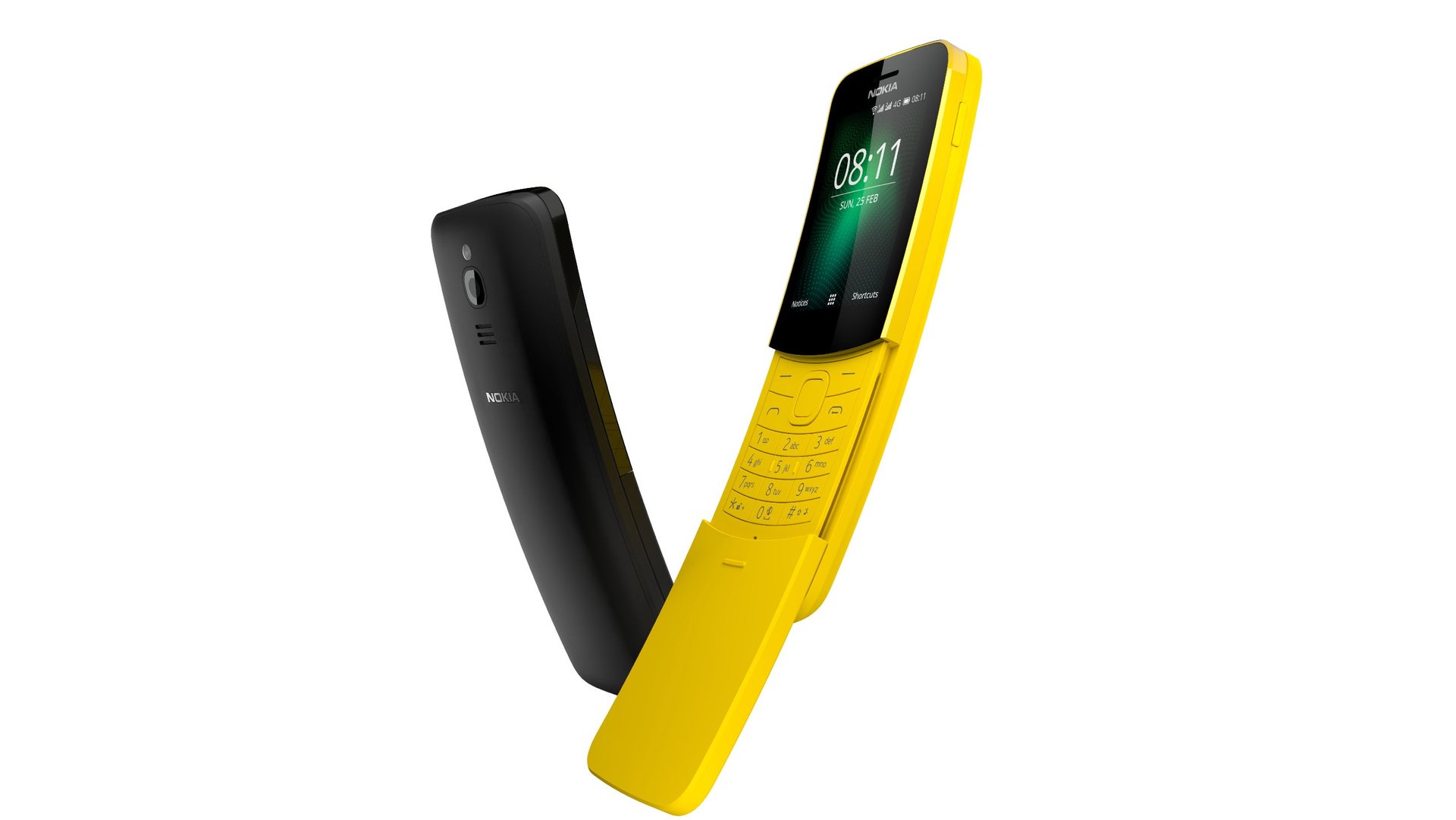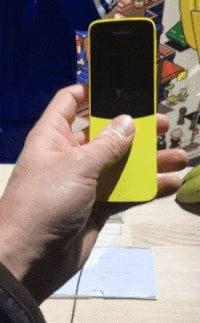The classic Nokia 8110 made famous by “The Matrix” is getting a reboot
Barcelona


Barcelona
Nokia’s historical phone portfolio is paying off for HMD Global, the Finnish company now licensing the venerable brand. On the eve of the Mobile World Congress trade show in Barcelona, the firm announced a rebooted Nokia 8110, made famous by the 1999 action movie, The Matrix. This time around, the distinctive slider phone will have a 4G connection and a €79 ($97) price tag when it goes on sale in May. The original that inspired it cost 10 times more in the 1990s, when it was one of Nokia’s top-of-the-line models.
This was the phone that “helped to fight the electronic menace” back in the late 1990s, HMD chief executive Florian Seiche said on stage in Barcelona, knowingly referencing The Matrix. In contrast to the gritty, grayed dystopia depicted in the films, the relaunched 8110 will come in “banana yellow” as well as black.

HMD stole the show at last year’s Mobile World Congress when it unveiled a redesigned Nokia 3310. At that time, Samsung cancelled plans to launch its flagship phone in the wake of its exploding batteries debacle, leaving more of the limelight for others. This year, Samsung’s flagship S9 launch is expected to dominate attention, so congress-goers expected a low turnout for the Nokia event, held a few hours before Samsung’s across town.
But HMD managed to draw a big crowd of analysts and journalists, the queue snaking around the block at the Barcelona contemporary art museum. The startup, staffed by longtime ex-Nokia and Microsoft executives, also announced it had shipped 70 million phones last year, and captured 1% of the smartphone market in the fourth quarter. To put that in context, Samsung, which shipped the most smartphones last year, moved 317 million units, according to research firm IDC. Xiaomi, ranked fifth, shipped 92 million units.
HMD appears to be doing well despite a sudden change in leadership last year. Founding CEO Arti Nummala abruptly departed in July, by “mutual agreement” with the company’s board, according to a HMD announcement at the time.
Besides the 8110, HMD announced four other models, all boasting the sorts of finishes—ceramic paint, aluminum uni-bodies—usually reserved for pricey Samsungs or Huaweis, for a lot less money. It also unveiled the Nokia 1, a smartphone that costs just $85. “In a sea of sameness we believe Nokia phones should stand out,” chief product officer Juho Sarvikas said. High quality and low prices will continue to be critical for HMD as it tries to capture a more meaningful smartphone market share by continuing to set itself apart from the pack.